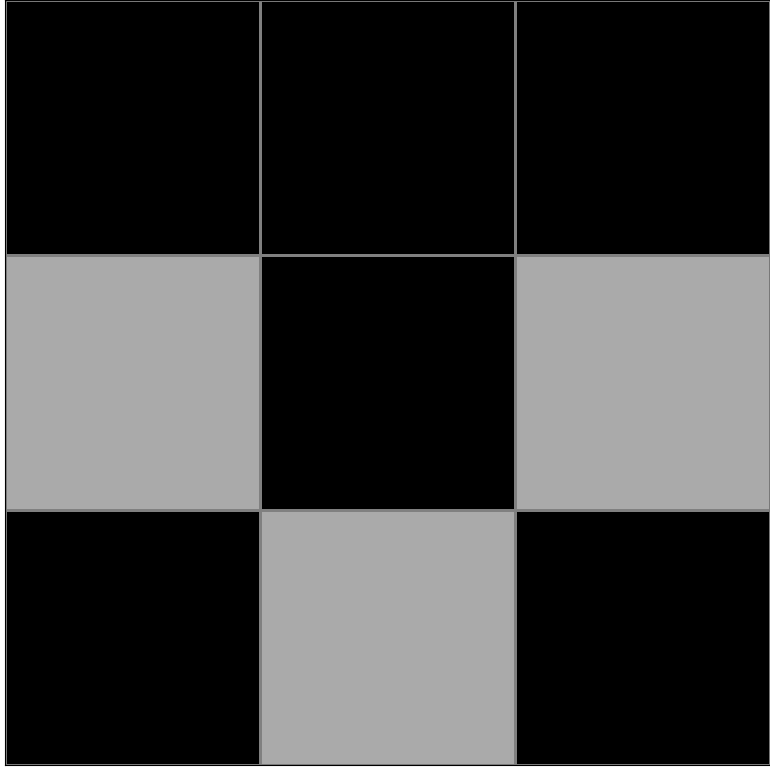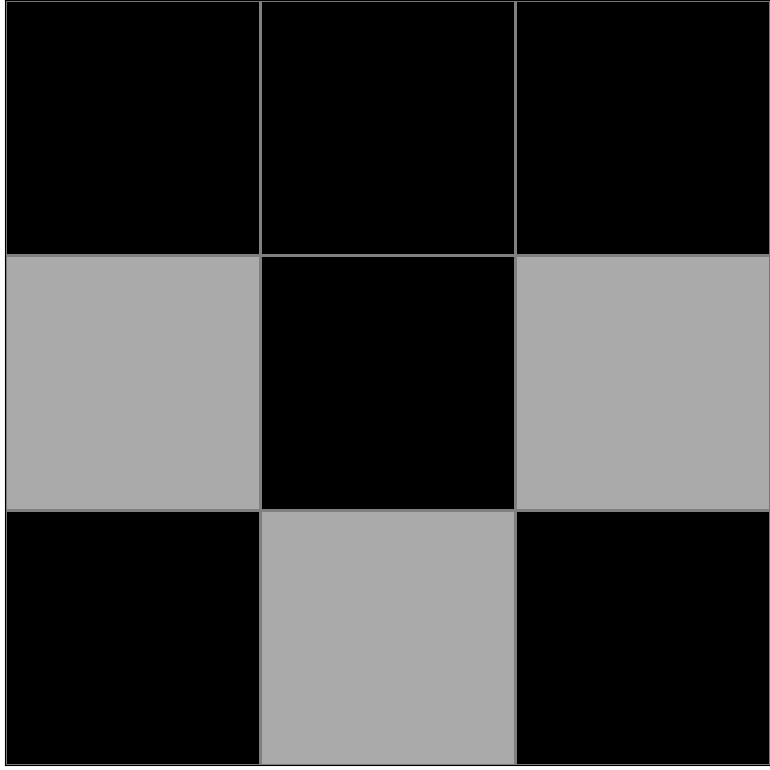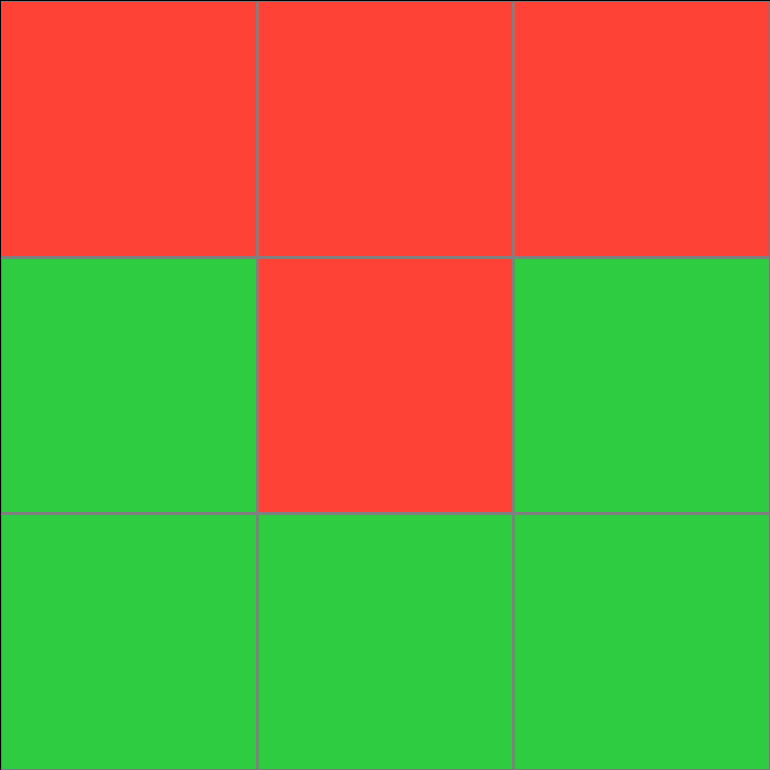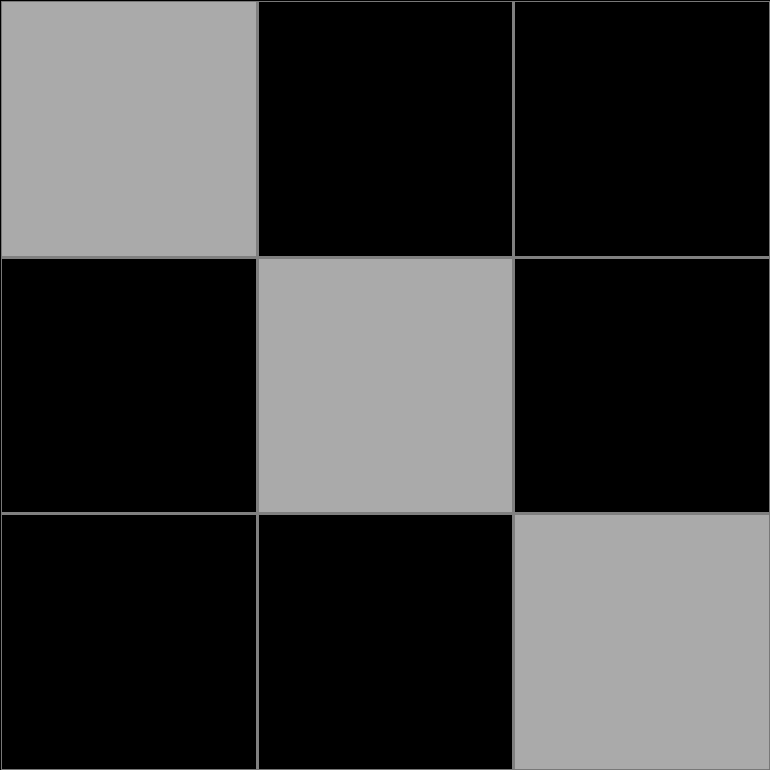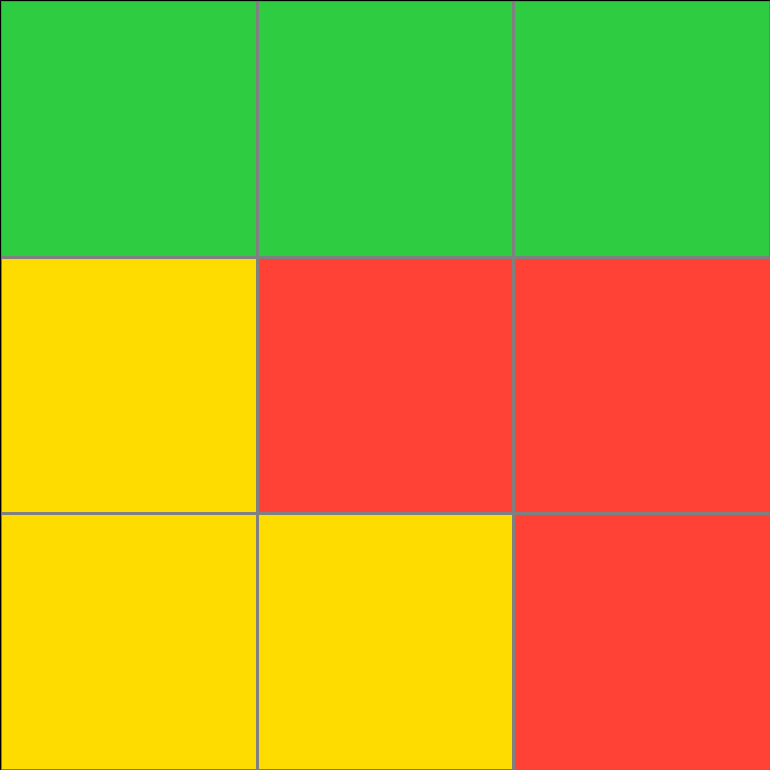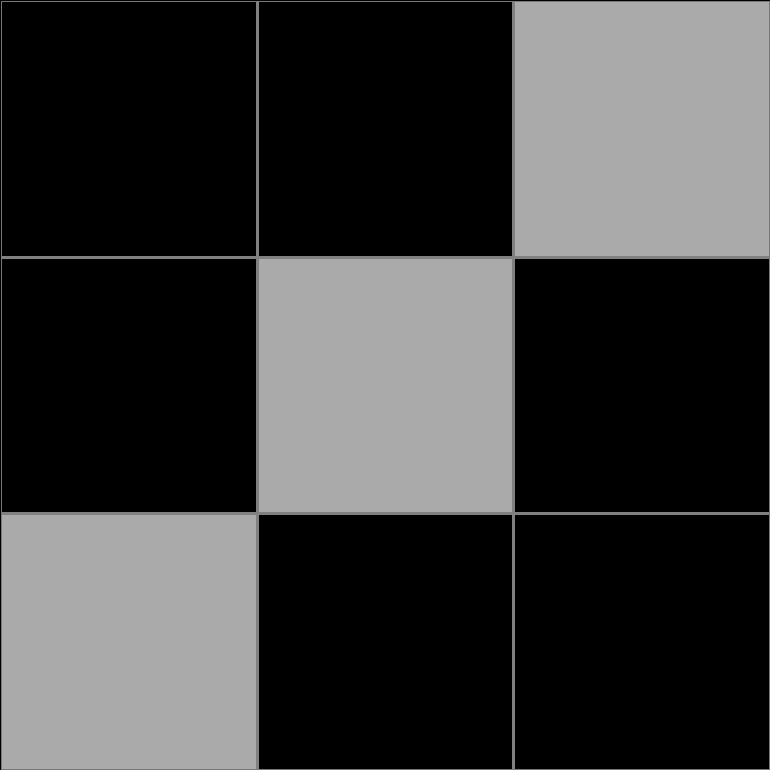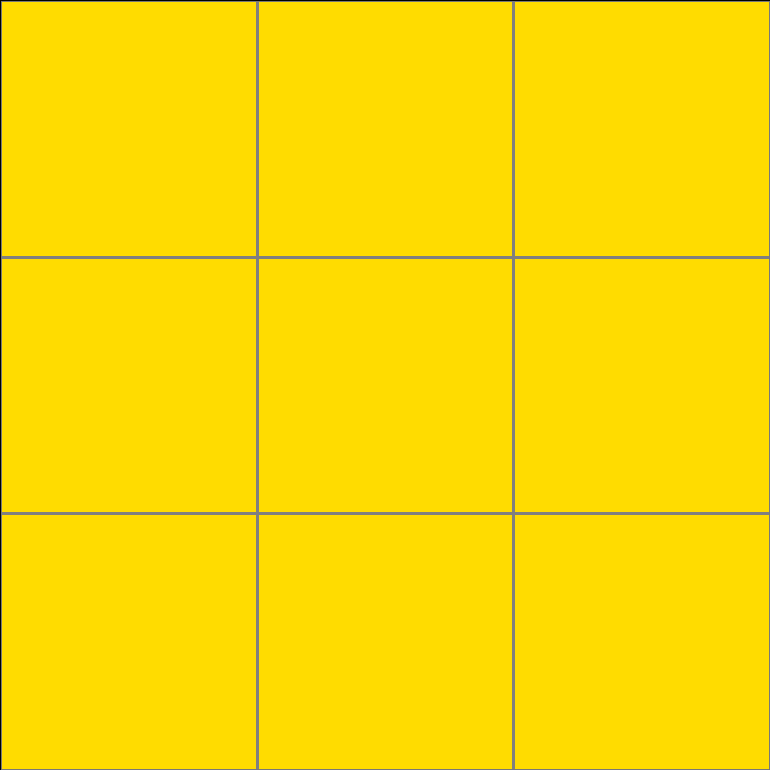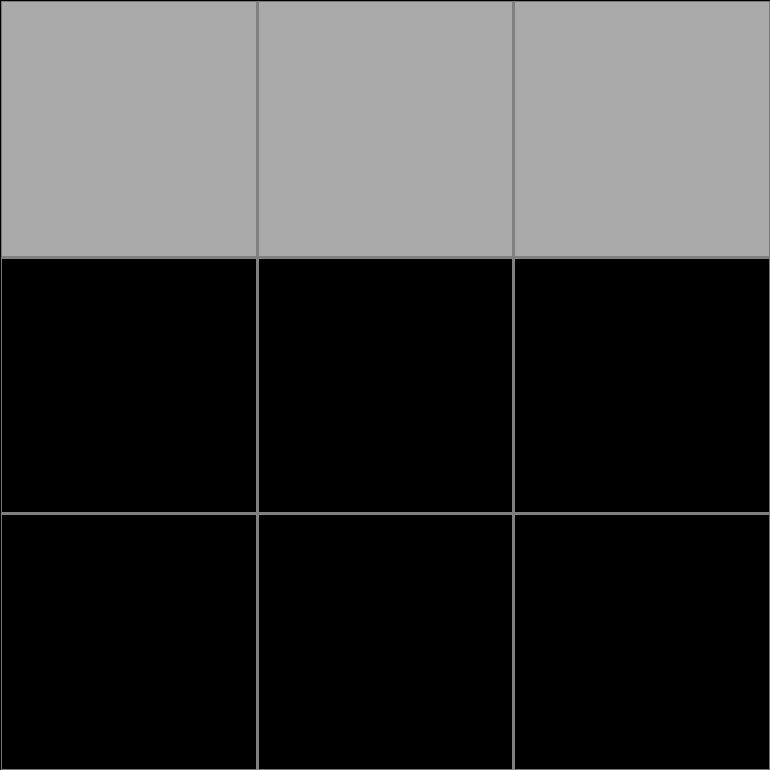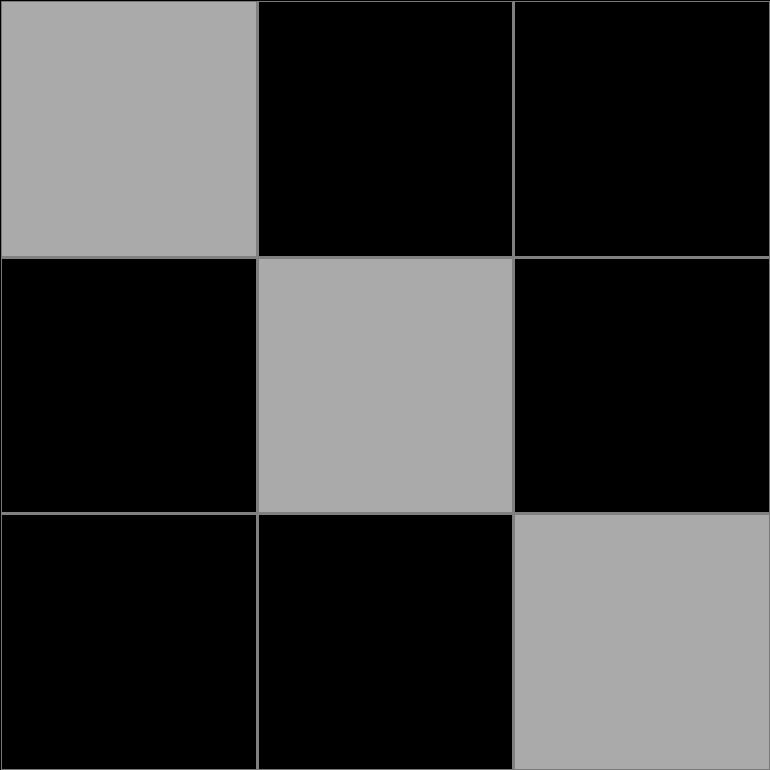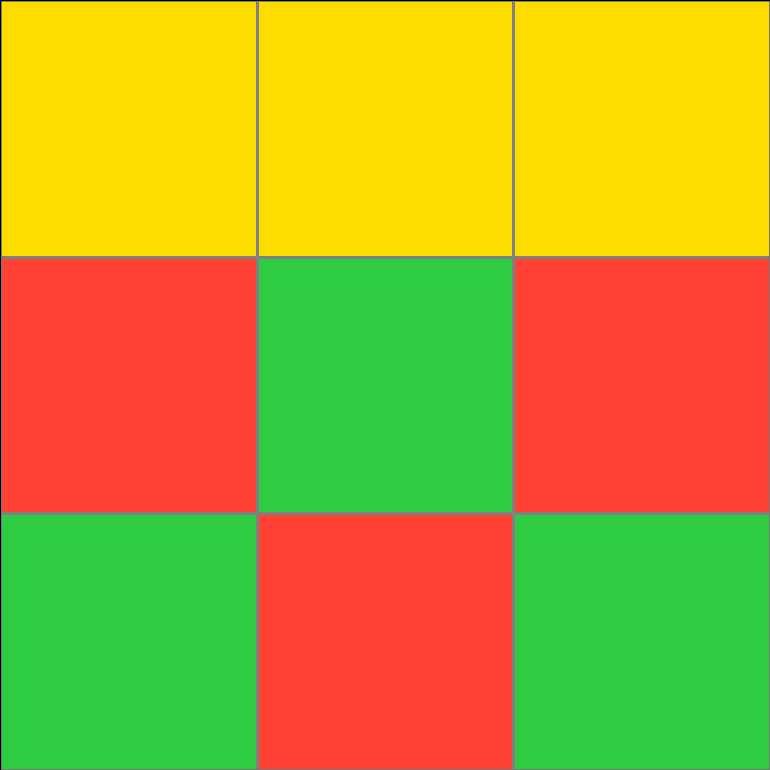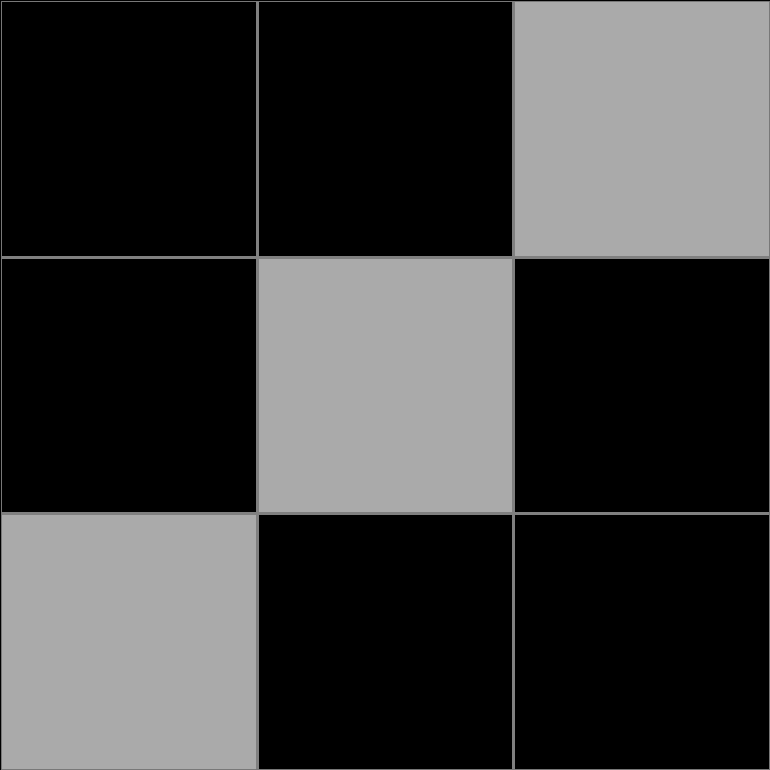Participant 1
Initial description: If the original has only one color, the output should be 3 gray squares across the top. If the original has two colors, the output should be 3 gray squares across the diagonal, from upper left to bottom right. If the original has 3 colors, the output should be 3 gray squares across the diagonal, from upper right to bottom left.
Final description: If the original has only one color, the output should be 3 gray squares across the top. If the original has two colors, the output should be 3 gray squares across the diagonal, from upper left to bottom right. If the original has 3 colors, the output should be 3 gray squares across the diagonal, from upper right to bottom left.
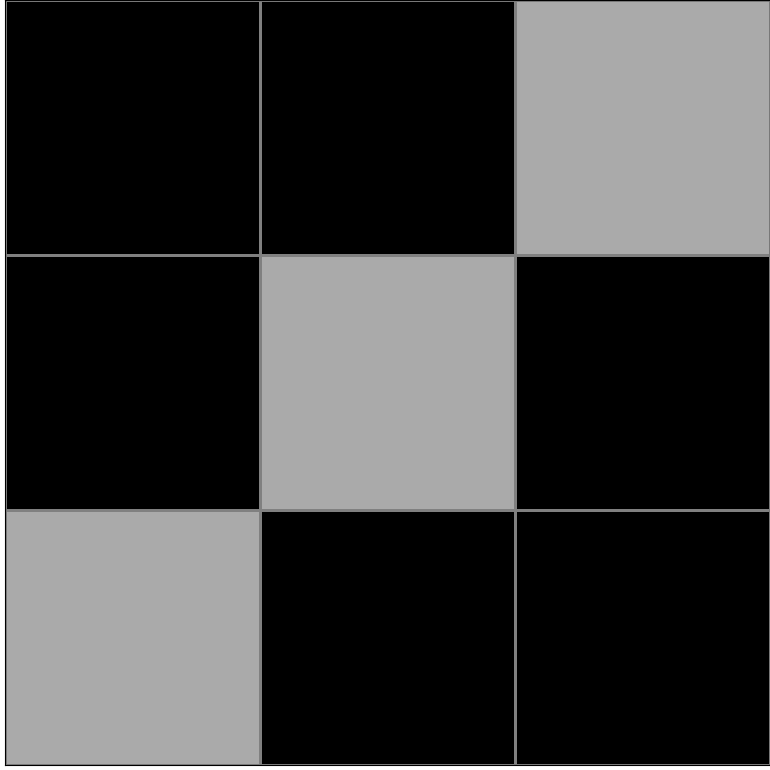
Participant 2
Initial description: Multiple colors are shifted to gray and black diagonal lines and monocolors to straight lines.
Final description: Multiple colors are shifted to gray and black diagonal lines and monocolors to straight lines.
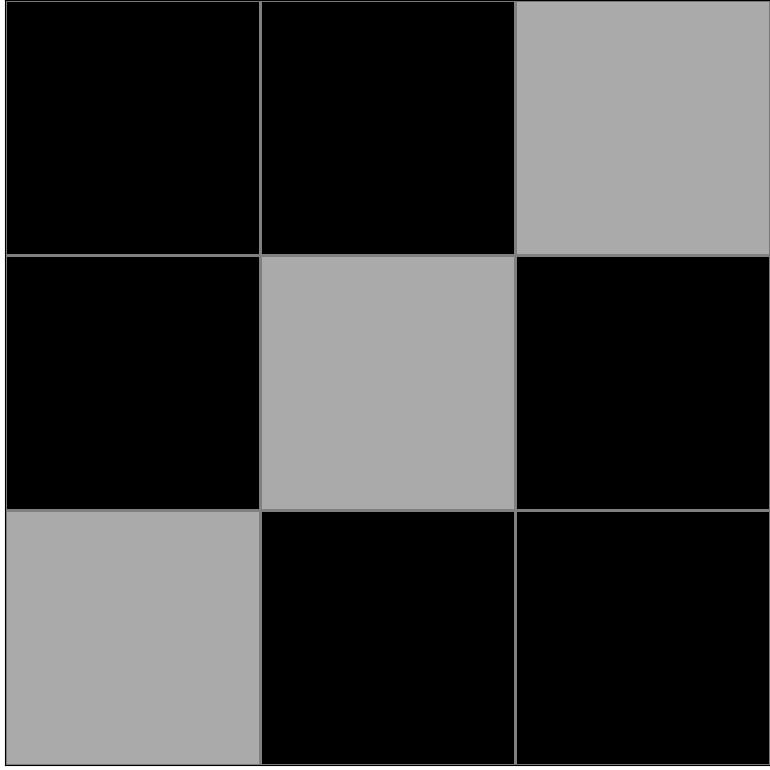
Participant 3
Initial description: This one poses a challenge. While I'm not entirely sure of my response, I can confidently state that because the grid differs from solid-colored examples like 3 and 4, the pattern wouldn't consist of one row of grey at the top and two rows of black at the bottom. Logically, the patterns could resemble examples 1, 2, or 5. Based on the colors used (yellow, green, and red), I lean towards it being similar to example 2.
Final description: This one poses a challenge. While I'm not entirely sure of my response, I can confidently state that because the grid differs from solid-colored examples like 3 and 4, the pattern wouldn't consist of one row of grey at the top and two rows of black at the bottom. Logically, the patterns could resemble examples 1, 2, or 5. Based on the colors used (yellow, green, and red), I lean towards it being similar to example 2.
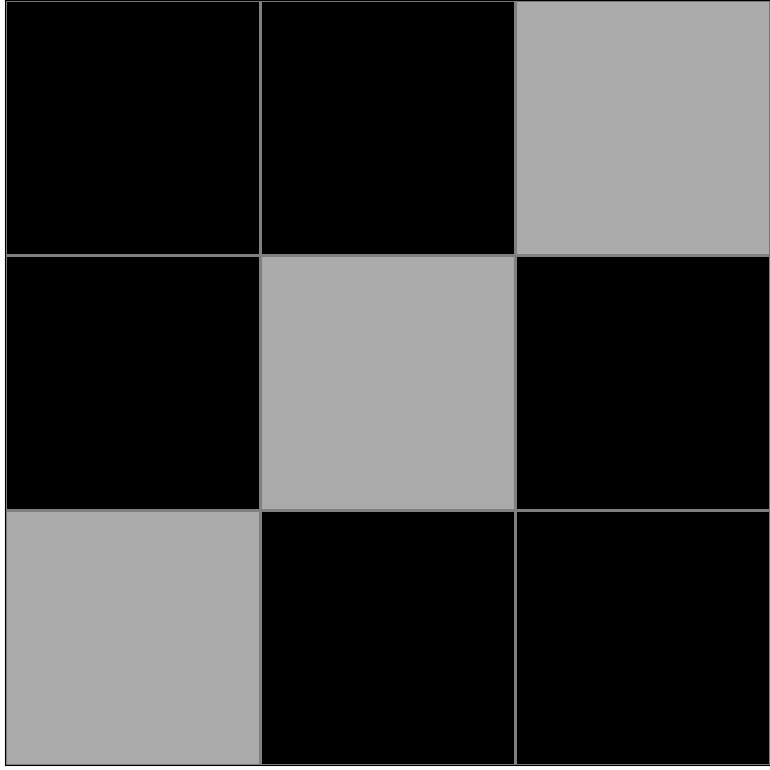
Participant 4
Initial description: Create a complete horizontal and vertical red line from each red square, and then color the enclosed squares blue.
Final description: first choose the squares and fill the color


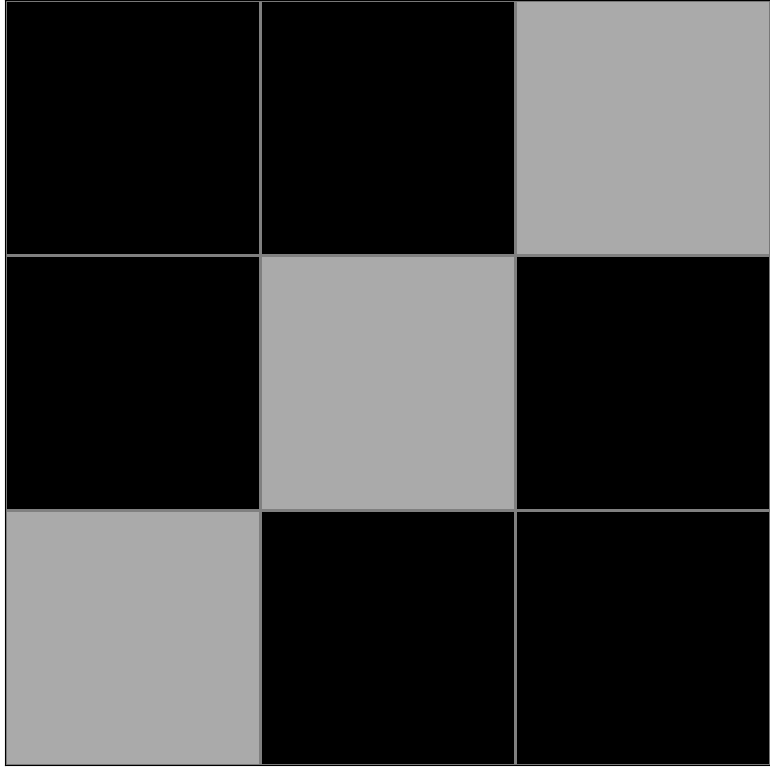
Participant 5
Initial description: I don't know
Final description: just follow the pattern in the output examples

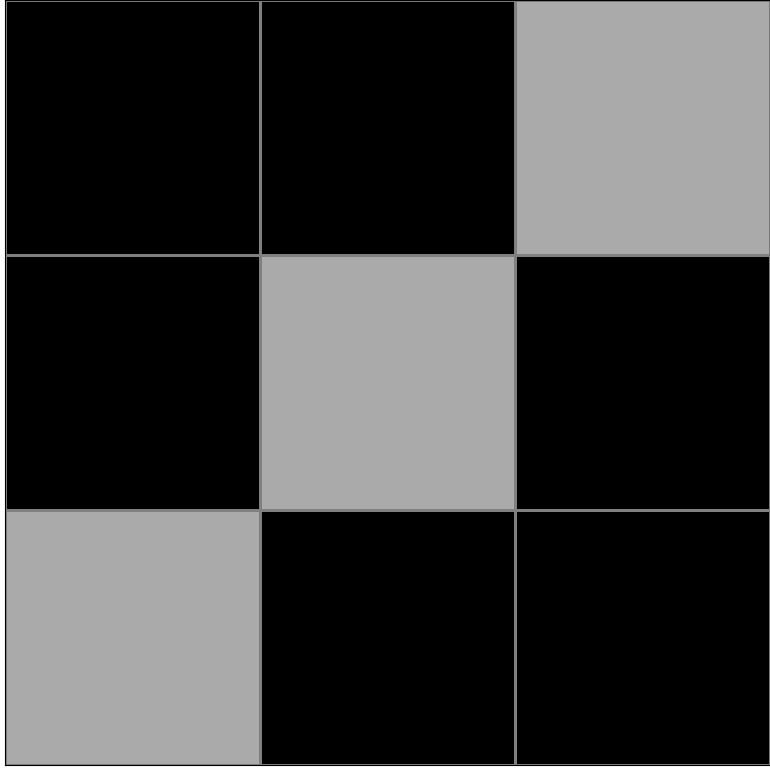
Participant 6
Initial description: none
Final description: none

Participant 7
Initial description: Three different color input form grey color diagonally.
Final description: Three different color input form grey color diagonally.
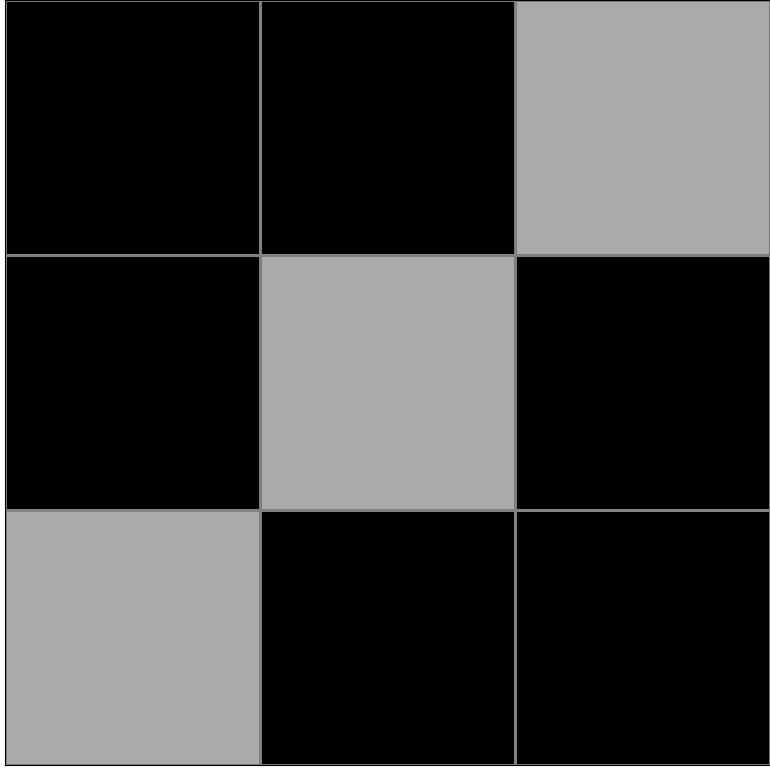
Participant 8
Initial description: If there is one color present, a white gray line is drawn at the top of the output. If there are two colors, a gray line starting at zero based coordinate (0,0) and ending at (2,2) is drawn. If there are three colors, a line starting at (0,2) and ending at (2,0) is drawn.
Final description: If there is one color present, a white gray line is drawn at the top of the output. If there are two colors, a gray line starting at zero based coordinate (0,0) and ending at (2,2) is drawn. If there are three colors, a line starting at (0,2) and ending at (2,0) is drawn.

Participant 9
Initial description: If there's yellow on the top the gray is diagonal.
Final description: I'm stumped on this one. I thought because of the yellow on the top it would be diagonal, but that was wrong. Then I thought because of the red maybe it was a combo of diagonal and horizontal. I don't know.

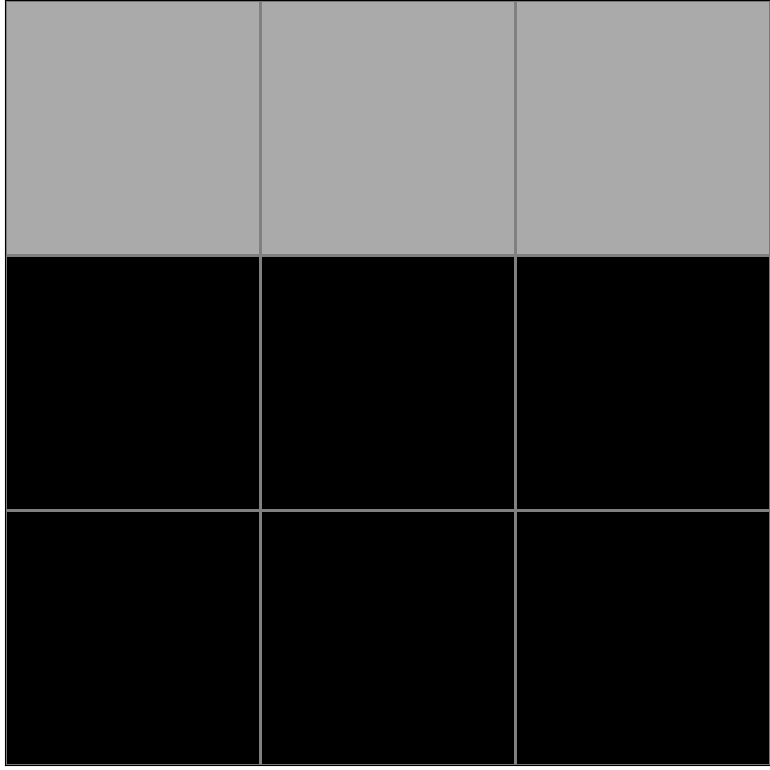

Participant 10
Initial description: This is the pattern if there are three colors.
Final description: This is the pattern if there are three colors.
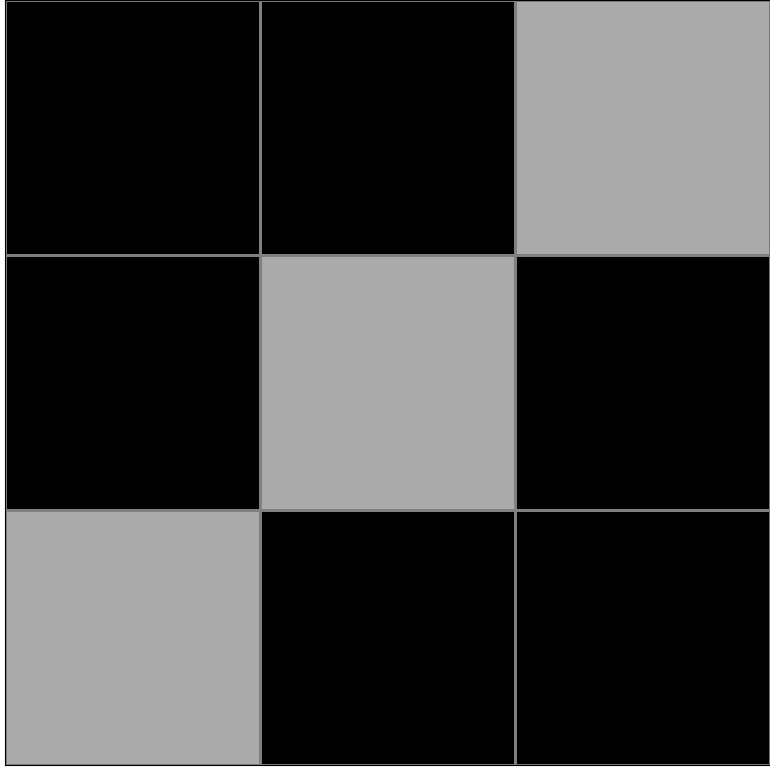
Participant 11
Initial description: The grid spins in a clockwise motion.
Final description: I thought a change from dark to light.
